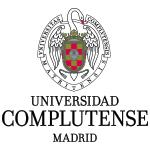Validation of a new serological assay for the identification of Mycobacterium tuberculosis complex-specific antibodies in pigs and wild boar
Investigation published in Preventive Veterinary Medicine
January 1st, 2019
Background and objectives
Animal tuberculosis (TB) is a multi-host disease involving a wide variety of domestic and wild mammals and causing a significant economic burden and sanitary problems. Wild boar and domestic pigs (Sus scrofa) are indicators of the circulation of the Mycobacterium tuberculosis complex (MTC) and can play a role in its maintenance. The proper diagnosis of MTC contact in these species is, therefore, a key factor as regards controlling TB. The objective of the current study is to evaluate the diagnostic performance of the protein complex P22 as a candidate for use in an in-house ELISA to identify M. tuberculosis complex-specific antibodies for the diagnosis of TB in comparison to the commonly used bPPD-based ELISA (bPPD ELISA) in suids.
Methods
We conducted a retrospective study. Sera were collected from wild boar during hunting season and from domestic pigs during routine handling, and all the animals underwent reference standard tests (detailed necropsy followed by bacteriological culture and isolation). Animal TB was confirmed to be positive in 277 animals and negative in 366 animals based on both reference standard tests. Sera from those animals were tested by P22 ELISA as well as bPPD ELISA.
Results
Both ELISAs yielded a good diagnostic value, however, a higher sensitivity (Se) and specificity (Sp) was achieved with the P22 ELISA (Se: 84.1%; CI95%: 79.3–88.2% / Sp: 98.4%; CI95%:96.5–99.4%) when compared to the bPPD ELISA (Se: 77.3%; CI95%: 71.9–82.2% / Sp: 97.3%; CI95%: 95–98.3%). An optimum Sp of 100% (CI95%: 98.54–100%) was attained with white pigs for both the bPPD and the P22 ELISA.
Discussion
The results suggest that serological tests for MTC-antibody detection, and particularly the P22 ELISA, are valuable tools in the diagnosis of TB in wild boar and domestic pigs when attempting to detect contact with MTC and thereby facilitate TB control and management
Thomas J., Infantes-Lorenzo JA., Moreno I., Cano-Terriza D., de Juan L., Garcia-Bocanegra I., Dominguez L., Dominguez M., Gortazar C. and Risalde MA.
| Sanidad y Biotecnología (SaBio). Instituto de Investigación en Recursos Cinegéticos (IREC). Consejo Superior de Investigaciones Científicas (CSIC). Universidad de Castilla La Mancha (UCLM). Gobierno de Castilla-La Mancha (JCCM). | |
| Indian Council of Agricultural Research (ICAR). | |
 | Servicio de Micobacterias (MYC). Centro de Vigilancia Sanitaria Veterinaria (VISAVET). Universidad Complutense (UCM). |
 | Departamento de Sanidad Animal. Facultad de Veterinaria. Universidad Complutense (UCM). |
| Servicio de Inmunología. Centro Nacional de Microbiología (CNM). Instituto de Salud Carlos III (ISCIII). | |
| Departamento de Sanidad Animal. Facultad de Veterinaria. Universidad de Córdoba (UCO). | |
| Hospital Universitario Reina Sofía de Córdoba. Instituto Maimonides de Investigación Biomédica de Cordoba. | |
